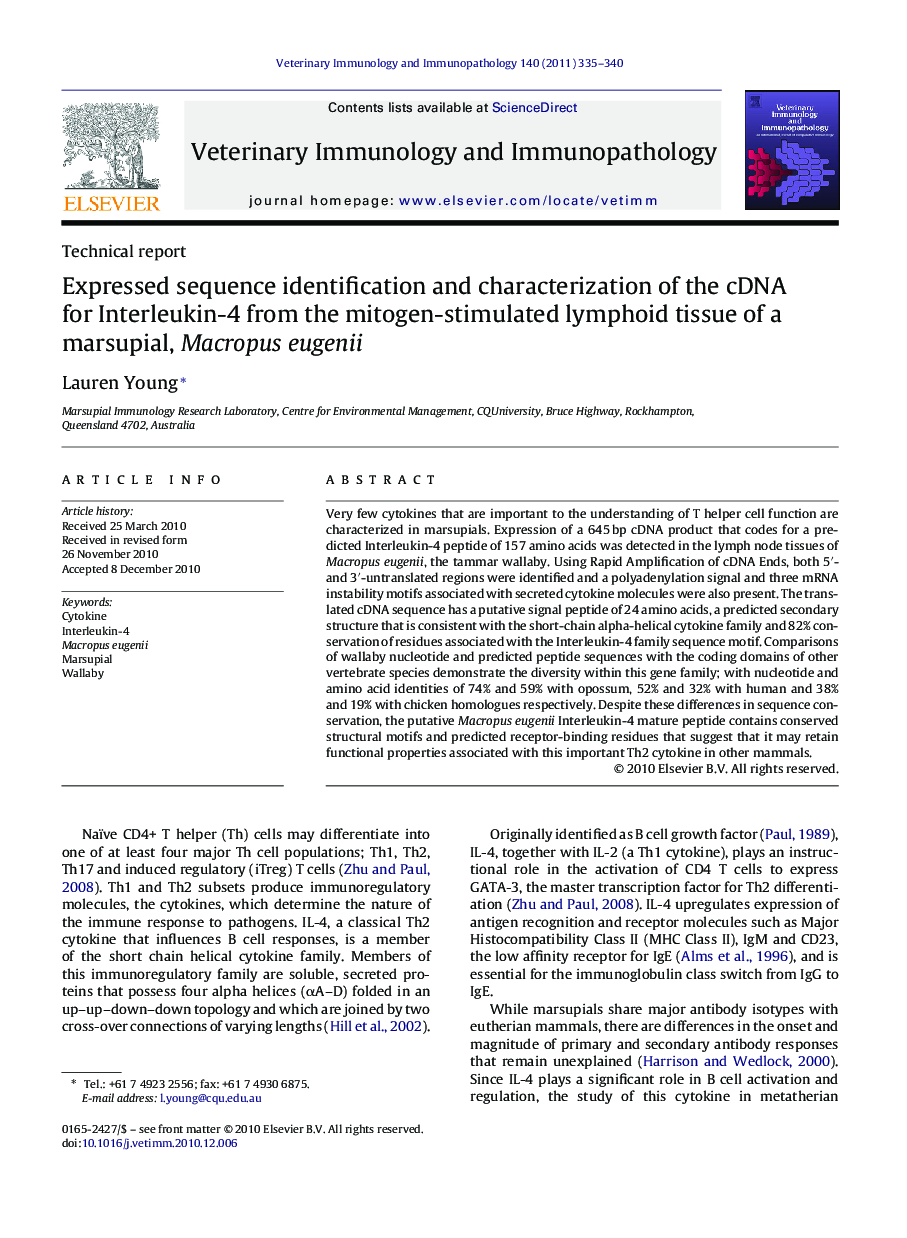| Article ID | Journal | Published Year | Pages | File Type |
|---|---|---|---|---|
| 5797024 | Veterinary Immunology and Immunopathology | 2011 | 6 Pages |
Very few cytokines that are important to the understanding of T helper cell function are characterized in marsupials. Expression of a 645Â bp cDNA product that codes for a predicted Interleukin-4 peptide of 157 amino acids was detected in the lymph node tissues of Macropus eugenii, the tammar wallaby. Using Rapid Amplification of cDNA Ends, both 5â²- and 3â²-untranslated regions were identified and a polyadenylation signal and three mRNA instability motifs associated with secreted cytokine molecules were also present. The translated cDNA sequence has a putative signal peptide of 24 amino acids, a predicted secondary structure that is consistent with the short-chain alpha-helical cytokine family and 82% conservation of residues associated with the Interleukin-4 family sequence motif. Comparisons of wallaby nucleotide and predicted peptide sequences with the coding domains of other vertebrate species demonstrate the diversity within this gene family; with nucleotide and amino acid identities of 74% and 59% with opossum, 52% and 32% with human and 38% and 19% with chicken homologues respectively. Despite these differences in sequence conservation, the putative Macropus eugenii Interleukin-4 mature peptide contains conserved structural motifs and predicted receptor-binding residues that suggest that it may retain functional properties associated with this important Th2 cytokine in other mammals.
